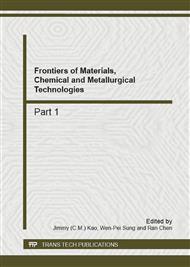p.803
p.808
p.819
p.823
p.827
p.831
p.836
p.842
p.847
Analysis on Crack Propagation Mechanism of Single Crystal Copper by FEAt Method
Abstract:
By FEAt method, the tensile processes of single crystal copper with the type I crack at temperature of 293K were simulated, and the effect of different initial crack lengths to crack propagation mechanism was analyzed. The results indicate that the different initial crack lengths have significant effect on crack propagation mechanism. With the increase of crack length, the critical stress of crack propagation was significantly reduced, the dislocation walls were easy to appear, and mesh staggered of the crack branch along the cleavage plane was more pronounced.
Info:
Periodical:
Pages:
827-830
Citation:
Online since:
October 2012
Authors:
Price:
Сopyright:
© 2012 Trans Tech Publications Ltd. All Rights Reserved
Share:
Citation:


